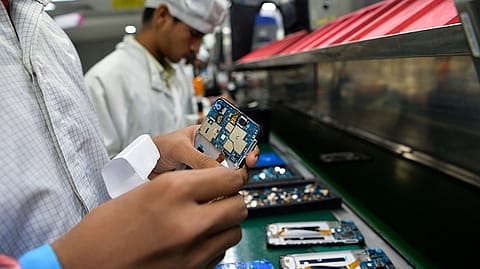Cabinet approves ₹22,919 crore boost for electronics manufacturing to power India's self-reliance
The scheme is expected to attract investments of ₹59,350 crore, result in the production of electronic goods worth ₹4,56,500 crore, and generate an additional 91,600 direct jobs

The Union Cabinet today approved the Electronics Component Manufacturing Scheme with a funding of ₹22,919 crore to make India more self-reliant in the electronics supply chain.
The scheme aims to develop a robust component ecosystem by attracting large investments—both global and domestic—in electronics component manufacturing. It seeks to increase domestic value addition (DVA) by building capacity and capabilities while integrating Indian companies into global value chains.
The scheme is expected to attract investments of ₹59,350 crore, result in the production of electronic goods worth ₹4,56,500 crore, and generate an additional 91,600 direct jobs, along with many indirect employment opportunities.
It offers differentiated incentives to Indian manufacturers, addressing specific challenges across various categories of components and sub-assemblies. These incentives are designed to help companies acquire technological capabilities and achieve economies of scale.
The targeted segments under the scheme include display module sub-assemblies, camera module sub-assemblies, non-surface mount device (non-SMD) passive components for electronic applications, lithium-ion cells for digital applications (excluding storage and mobility), and enclosures for mobile, IT hardware products, and related devices, among others.
The scheme will run for six years, with a one-year gestation period. A portion of the incentive payout will be linked to employment target achievements.
Electronics is one of the highest-traded and fastest-growing industries globally, playing a pivotal role in shaping the global economy and driving a country’s economic and technological development. Given its widespread applications across all sectors, electronics holds both economic and strategic significance.
Recommended Stories
With various initiatives by the Government of India, the electronics manufacturing sector has witnessed remarkable growth over the past decade. Domestic production of electronic goods has increased from ₹1.90 lakh crore in FY 2014-15 to ₹9.52 lakh crore in FY 2023-24, registering a compound annual growth rate (CAGR) of more than 17%. Meanwhile, exports of electronic goods have risen from ₹0.38 lakh crore in FY 2014-15 to ₹2.41 lakh crore in FY 2023-24, with a CAGR exceeding 20%.
Cabinet Approves Nutrient-Based Subsidy Rates for Kharif 2025
In a separate development, the Cabinet approved the Department of Fertilizers’ proposal to fix the Nutrient-Based Subsidy (NBS) rates for the Kharif season of 2025 (from April 1, 2025, to September 30, 2025) on phosphatic and potassic (P&K) fertilizers. The budgetary requirement for the Kharif season 2024 is expected to be approximately ₹37,216.15 crore—about ₹13,000 crore more than the budgetary requirement for the Rabi season 2024-25.